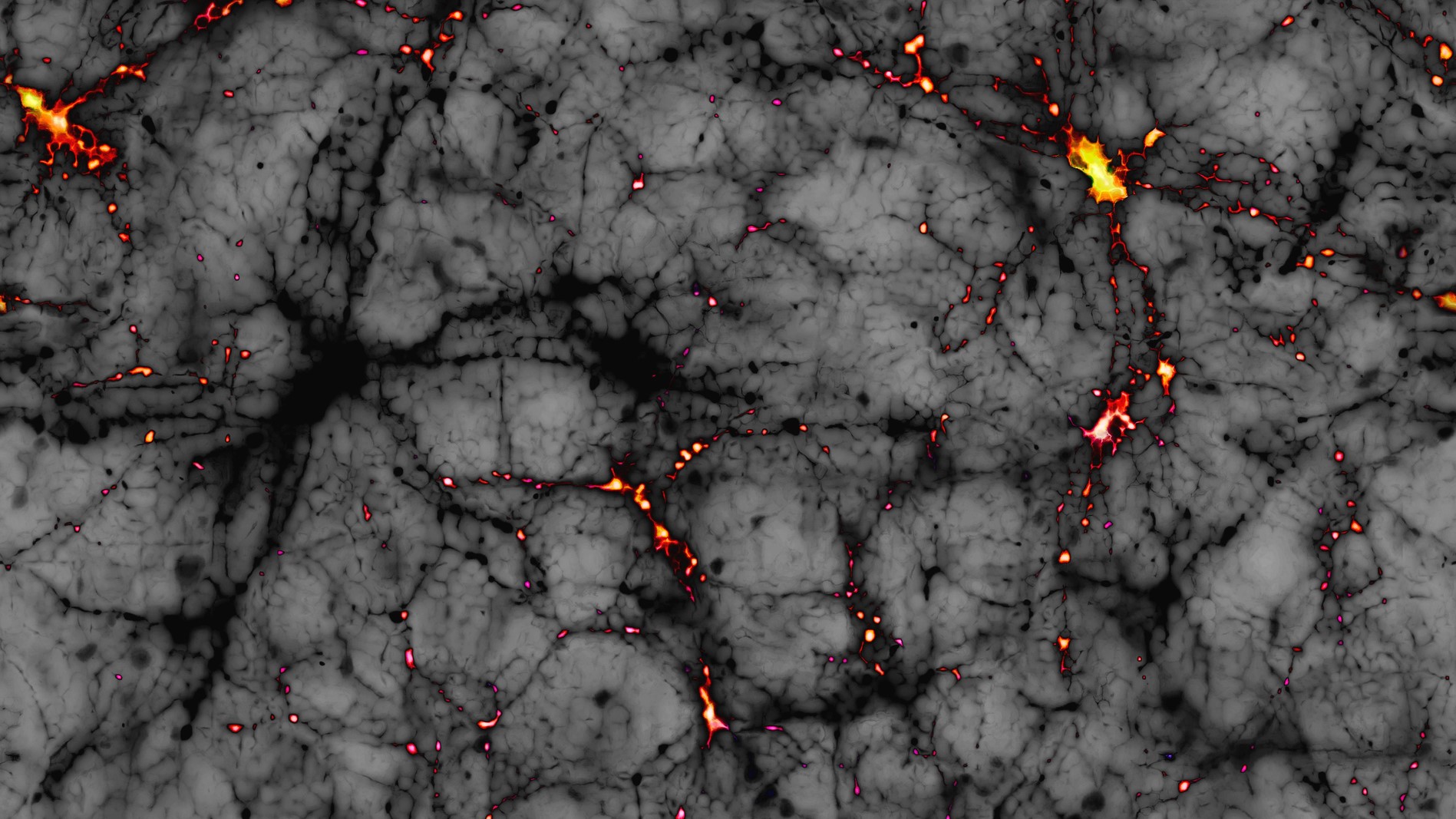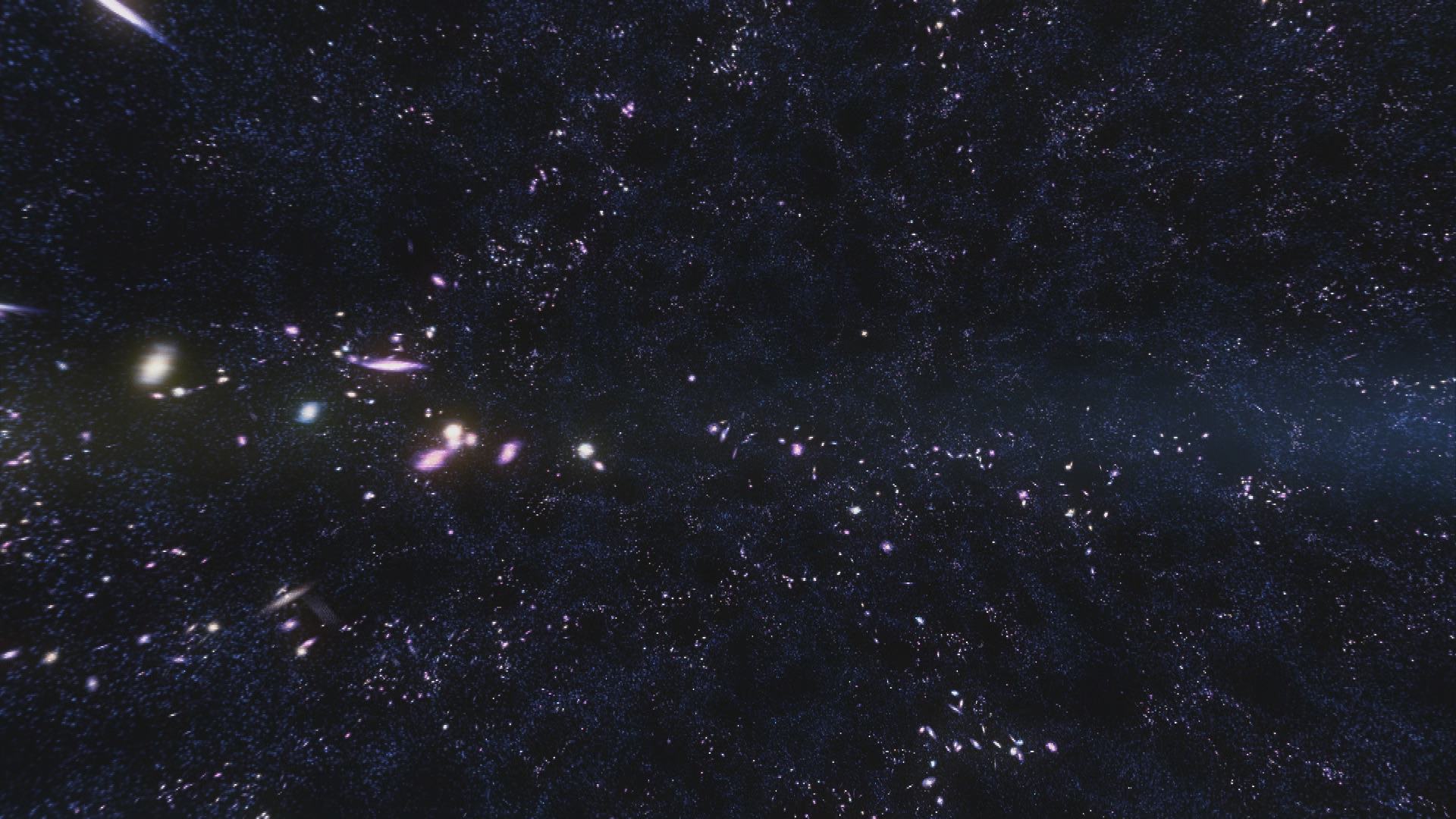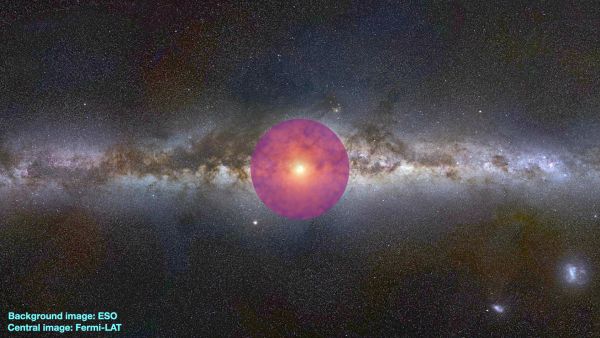What is dark matter?
Dark matter makes up a large portion of the universe, but we've never seen it. Here's what we know, what it might be, and why it could change everything.

More than 80% of the universe's matter is invisible, and we don't know what it is. This mysterious substance, known as dark matter, doesn't emit or reflect light, making it impossible to see directly.
But without it, galaxies would fly apart. Here's what scientists know — or think they know — about this cosmic puzzle.
Related: If dark matter is 'invisible,' how do we know it exists?
What is dark matter?
Dark matter is an invisible, mysterious substance that makes up more than 80% of the matter in the universe — but scientists aren't sure what it is.
While it doesn't emit, absorb, or reflect light, we know dark matter exists because of the way its gravity affects visible matter. Galaxies rotate faster than they should based on the mass we can see, and large-scale structures in the universe form in patterns that only make sense if there’s much more matter out there than meets the eye.
Dark matter may hold the key to understanding how galaxies form, how the universe evolved, and even what it's made of at the deepest level.
How do we know dark matter exists?

Dark matter doesn’t interact with light, so we can’t see it directly. Instead, scientists detect its presence through its gravitational influence on visible objects.
Here are a few key lines of evidence for dark matter:
1. Galaxy rotation curves
When astronomers measure how fast stars orbit the centers of galaxies, they find something strange. The stars at the edges of galaxies are moving much faster than they should be if only visible matter were present. This suggests that something unseen — dark matter — is adding to the galaxy’s mass and keeping those stars from flying off into space.
2. Gravitational lensing
According to Einstein’s theory of general relativity, massive objects can bend the path of light. When light from distant galaxies travels toward us, it sometimes passes near invisible clumps of dark matter, which warp the light’s path in a phenomenon called gravitational lensing. By studying how light is distorted by galaxy clusters, astronomers have been able to create a map of dark matter in the universe.
3. The Cosmic Microwave Background (CMB)
The CMB is the leftover radiation from the Big Bang, and it contains tiny temperature fluctuations that reveal how matter was distributed in the early universe. The pattern of these fluctuations only makes sense if dark matter was already present, influencing how ordinary matter clumped together.
4. Large-scale structure of the universe
Computer simulations of the universe's evolution show that galaxies and galaxy clusters form the way they do only if there’s a huge amount of dark matter. Without it, structures would be much smaller and more scattered.
What is dark matter made of?
Despite decades of study, scientists still don't know exactly what dark matter is made of. They do know it's not made of ordinary atoms — the same kind of matter that makes up stars, planets, and people. That kind of matter is called "baryonic," and dark matter appears to be "non-baryonic."
Here are some of the leading candidates for what dark matter might be:
WIMPs (Weakly Interacting Massive Particles)
These hypothetical particles are among the top contenders. They would have mass and interact via gravity and possibly the weak nuclear force, but not with light or electromagnetism, which would make them invisible. Large underground detectors have been trying to catch one of these elusive particles in action, but so far, no luck.
Axions
Axions are ultra-light particles that could exist in large numbers and act like a cold, invisible fluid throughout space. They’re another strong candidate for dark matter, especially since they might help solve other physics puzzles, such as the strong-CP problem in particle physics.
Sterile neutrinos
Neutrinos are ghostly particles that barely interact with matter. Sterile neutrinos would be even more elusive than regular neutrinos, and if they exist, they could account for some or all of dark matter.
Primordial black holes
Some scientists have considered that dark matter could be made of tiny black holes formed in the early universe. These would be small and difficult to detect, but they remain a long-shot possibility.
Could it just be gravity that is wrong?
A few researchers have proposed that dark matter doesn't exist at all — instead, maybe our understanding of gravity breaks down at large scales. One of the most prominent alternative theories is called Modified Newtonian Dynamics, or MOND. It adjusts how gravity behaves at very low accelerations, like those on the outskirts of galaxies.
However, MOND and similar theories struggle to explain all of the evidence, especially the detailed patterns in the cosmic microwave background and gravitational lensing. That's why most scientists still think dark matter is a real substance — one we just haven’t been able to detect directly yet.
Dark matter Q&A with an expert
We asked Glenn Starkman, a Distinguished University Professor and co-Chair of Physics and Professor of Astronomy at Case Western Reserve University, a few frequently asked questions about gravity.

Distinguished University Professor and co-Chair of Physics and Professor of Astronomy at Case Western Reserve University, Director of the Institute for the Science of Origins, Director of the Center for Education and Research in Cosmology and Astrophysics.
Does dark matter exist?
I wish I knew! What we do know is that if we look at a typical galaxy, take account of all the matter that we see (stars, gas, dust) and use Newton's Laws of Gravity and motion (or, more correctly, Einstein's General Relativity), to try to describe the motions of that material, then we get the wrong answer. The objects in galaxies (nearly all of them) are moving too fast. There should not be enough gravity to keep them from flying out of the galaxy that their in. The same thing is true about galaxies moving around in clusters.
There are two possible explanations:
1. There is more stuff (matter) that we don't see with our telescopes. We call this dark matter.
2. Newton's laws and even GR are wrong on the scale of galaxies and everything bigger. This idea is usually called modified gravity (because we need to modify GR) or Modified Newtonian Dynamics (MOND).
Mostly, cosmologists believe that the answer is that the behavior of galaxies is explained by dark matter. Why? Partly. because it has been very hard to write down a successful theory of MOND or modified gravity. And partly because it turned out that when we turned our microwave telescopes to look at cosmic background radiation (CMB), the light from the early universe, it turned out that, according to GR, the same amount and type of dark matter was also required to explain the behavior of the sound waves that traveled in the universe when it was less than 500,000 years old, and whose imprints we are able to see. Modified gravity struggles to provide a unified explanation across all these systems — galaxies, clusters of galaxies, the universe.
But we don't yet know what the dark matter is made of.
Does dark matter have mass?
If dark matter exists, it must have mass. Massless dark matter would not behave in ways that solve the problems that dark matter addresses.
What does dark matter do?
The two things we know for sure about dark matter (assuming it exists), is that it exerts gravity (has mass) and that it moves slowly (compared to the speed of light).
How do you look for dark matter?
Since we don't know what dark matter is, the answer is: for every possible candidate for the dark matter there is a different strategy to search for it. People build giant detectors deep underground (to get away from all the other particles streaming through the environment around us) and look for signals of the dark matter hitting their detector after passing through the Earth overhead.
I happen to be looking for a form of dark matter that is quite massive — between about 100g and many tonnes — and would have more easily visible effects. But because it is massive, it is very rare. (We know how much total mass of dark matter there should be, so if the individual dark matter particles are heavy, there are fewer of them.) For example, if it hit a rock, it would melt the rock along its path as it zoomed through the rock. We can look for the scars of those passages, for example, in granite counter tops.
How are scientists searching for dark matter?

Physicists and astronomers are using multiple strategies to try to detect dark matter particles or understand their nature.
Direct detection experiments
These experiments, often located deep underground to shield them from cosmic rays, are designed to catch a dark matter particle interacting with a detector. Experiments like LUX-ZEPLIN (LZ) and XENONnT are pushing sensitivity to new levels.
Particle colliders
The Large Hadron Collider (LHC) smashes particles together at high energies, potentially creating dark matter particles that escape detection but leave behind missing energy and momentum in the collision data.
Astronomical observations
Telescopes around the world and in space continue to map the distribution of dark matter using gravitational lensing and galaxy surveys. Instruments like the Vera C. Rubin Observatory and the European Space Agency's Euclid mission will provide even better data.
Axion and neutrino experiments
Dedicated experiments like ADMX (Axion Dark Matter Experiment) and searches for sterile neutrinos are testing other potential dark matter candidates.
Fast facts about dark matter
- Dark matter makes up about 27% of the universe. Ordinary matter is only 5%. The rest is dark energy.
- We can't see it directly, but its gravitational effects are everywhere.
- Galaxies rotate faster than expected, which is one of the main clues pointing to dark matter.
- WIMPs and axions are two of the top candidates for what dark matter might be.
- No direct detection yet, but experiments are ongoing around the world.
Additional resources
You can read more about dark matter on the website of the U.S. Fermi National Accelerator Laboratory (Fermilab), which runs high-energy experiments in cutting-edge particle colliders with the goal of discovering particles that would fill the gaps in our understanding of the universe. The European Organization for Nuclear Research (CERN), the largest particle physics laboratory in the world, is also on a quest to find missing dark matter particles. NASA discusses the difference between dark matter and dark energy in this article.
Bibliography
NASA, Dark Energy, Dark Matter, https://science.nasa.gov/astrophysics/focus-areas/what-is-dark-energy
Clegg, B. Dark Matter and Dark Energy: The Hidden 95% of the Universe, Icon Books, August, 2019
CERN, Dark Matter, https://home.cern/science/physics/dark-matter
Join our Space Forums to keep talking space on the latest missions, night sky and more! And if you have a news tip, correction or comment, let us know at: community@space.com.
Get the Space.com Newsletter
Breaking space news, the latest updates on rocket launches, skywatching events and more!

Nola Taylor Tillman is a contributing writer for Space.com. She loves all things space and astronomy-related, and always wants to learn more. She has a Bachelor's degree in English and Astrophysics from Agnes Scott College and served as an intern at Sky & Telescope magazine. She loves to speak to groups on astronomy-related subjects. She lives with her husband in Atlanta, Georgia. Follow her on Bluesky at @astrowriter.social.bluesky
- Daisy DobrijevicReference Editor
- Tereza PultarovaSenior Writer
You must confirm your public display name before commenting
Please logout and then login again, you will then be prompted to enter your display name.
